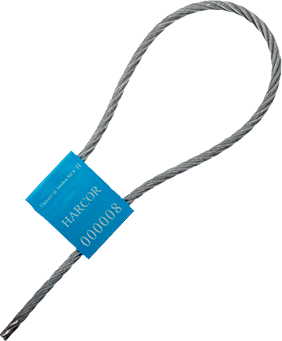Posted In News
Security Seals and Tamper Evidence: What You Need to Know
What is a security or tamper evident seal?
Security seals are your first line of defence when protecting your valuable products against tampering, spoiling and unnecessary shrinkage. Also known as tamper seals, tamper evident seals or anti tamper tags, they can be helpful in a wide range of industries.

Security seals are commonly used in securing medication, foodstuffs and currency. However, they can also benefit businesses that need better inventory management and consumer confidence.
Security seals come in a range of designs and materials. In this article, we’ll look at why security seals are important, how to use them, and what to look for if you suspect tampering.
Why are security seals so important?
Security seals play a critical role in maintaining the integrity and security of your goods, assets, and confidential information. They’re highly visible so tamper evident seals act as a deterrent against theft, unauthorised access and contamination.
While the benefits of fast identification of potential breaches may seem obvious, security seals offer businesses other valuable improvements.
Tracking and inventory management
Many security seals products display a unique serial number, which allows you to easily track them. It can also ensure accountability throughout your supply chain. Serial numbers help with faster identification of compromised goods and process improvement opportunities.
![]()
Compliance with regulatory requirements
Many industries, such as pharmaceuticals, transportation, and foodstuffs, operate under strict regulations and safety standards.
Tamper evident seals help you comply with these regulations, protecting your business, your employees, and your consumers.
Brand confidence
Many security seal products can be customised to your business to further your marketing efforts. These branded anti tamper tags also offer an unexpected benefit: confidence in your brand.
Nothing communicates your commitment to your customers, the authenticity of your product, and your professionalism quite like a safely sealed and branded package.
How do you install a security seal?
There are a wide range of different seal types available, and all have various installation methods. Methods can include threading a wire through a self-locking mechanism, pushing a tab down until it clicks, or inserting a metal or plastic pin.
While the techniques may vary, the principles for each are the same:
● Choose the right seal for your need, considering application, strength, materials and tracking requirements.
● Follow the manufacturer’s instructions for your chosen seal’s installation.
● Make sure the seal is tightly secured.
● Confirm the seal is properly engaged and can’t be removed or tampered with without leaving visible evidence.
How do you know if a security seal has been tampered with?
Knowing what to look for in a compromised security seal is essential in identifying a breach quickly and effectively.
The tamper evidence will vary according to the type of seal. Some common signs to look for are:
● Physical damage, this can be subtle such as seal material blushing due to manipulation.
● Mismatched seal components, or unique identifiers that don’t correspond with records.
● Seals with warps, burns, scratches, or other evidence of tampering.
● For security labels and tapes, traces of glue or other adhesive substances may suggest an attempt to remove or replace the seal.
Many security seals include unique tamper indicators such as cable seals that fray when cut and labels that show a void message when removed from a surface.
4 things you might not know about security seals
As the security seal industry evolves, so do the ranges of designs and materials.
1. They’re becoming increasingly eco-friendly via recycling
In response to environmental concerns, security seals are now being selected due to their eco-friendly materials. Often made from plastics and metals, many tamper evident seals can be recycled.
2. They can comply with international regulations
Some security seals are subject to international standards under ISO 17712. Under these regulations, metal seals must comply with requirements for identification, strength, durability, chemicals and tamper evidence.

3. Technology is rapidly improving security
In recent years, technology is becoming an important partner in effective security seal systems.
From the use of QR codes, through to electronic key cabinets and wirelessly-controlled access methods, technology is expediting and improving security measures in important ways.
Security seals have a long history
Security seals date back as far as the 7th century BC. Ancient civilisations in Egypt and Mesopotamia frequently used wax and clay seals to protect scrolls, containers, or even closed doorways.
In medieval times, seals secured the merchandise of merchants, traders and craftsmen against tampering, and confirming product quality.
Security seals as we currently know them, first appeared in the late 1800s to protect rail containers against theft and contamination. Growing in popularity during the industrial revolution, anti-tamper seals quickly became crucial additions for many businesses and industries.
Fast forward to today, and security seals have progressed into a huge array of materials, applications, strength ratings and even colours.
Using advanced features such as serial numbers, barcodes, QR codes and tracking software, the security seal industry has continued to grow and develop according to its consumers’ needs.
BIO: Harcor is Australia’s first and largest dedicated security seal supplier. If you’re looking for advice on the right security seals for your needs, please contact our friendly team.


